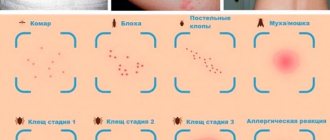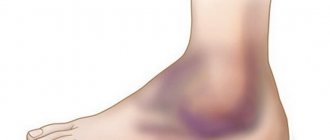How does hydrogen sulfide poisoning occur?
Hydrogen sulfide or hydrogen disulfide is a toxic, volatile chemical that is irritating to mucous membranes and skin if inhaled or directly contacted. Usually the gas penetrates through the lungs and causes intoxication, but it can also be partially absorbed through pores in the skin.
In addition to its irritating effects, hydrogen sulfide suppresses the activity of the nervous system and gas exchange in tissues, which leads to severe hypoxia.
Hydrogen sulfide is released during the decomposition of mining ores with sulfide components. Therefore, it poses a threat to miners and oil industry workers. In addition, hydrogen sulfide is released into the air in high concentrations during a volcanic eruption.
In domestic conditions, the production of hydrogen sulfide occurs in landfills, in sewers - where processes of decomposition of protein compounds are actively taking place.
Hydrogen sulfide is also used for medicinal purposes as part of mineral baths. Such procedures reduce inflammation, accelerate tissue regeneration and stimulate the immune system.
Acute hydrogen sulfide intoxication occurs when:
- Work in underground mines and mining enterprises;
- Accidents in “hazardous” production or in transport transporting toxic substances;
- Careless work with chemical reagents when, as a result of laboratory experiments, a significant amount of hydrogen disulfide is released;
- Violations of safety regulations at risk-group enterprises (production of rubber, cellulose, asphalt, textile, leather production);
- Incorrect selection of the dose of hydrogen sulfide in medicinal baths;
- A volcanic eruption located close to human habitation.
Chronic poisoning occurs if a person regularly comes into contact with small concentrations of hydrogen sulfide. This situation is typical for workers in industrial and mining enterprises, as well as residents of areas adjacent to large landfills. The biodegradation process releases a toxin that accumulates in low-lying areas and can harm the health of local residents.
Concentrated hydrogen sulfide has a specific “rotten egg” odor, which serves as a danger signal. However, if the gas content in the air is high, you should not focus on this sign - hydrogen disulfide blocks sensitive nerve endings, and the nose stops smelling it.
First aid for alcohol poisoning
When ethanol breaks down in the liver, harmful substances are formed. They act like drugs and cause euphoria, which is why they drink alcohol in the first place. In large doses, these products cause severe intoxication.
Signs of alcohol poisoning:
- characteristic odor from the victim’s mouth (“fumes”);
- incoherent speech, inability to control your movements, muscles, sphincters, hallucinations, disturbances of consciousness;
- vomiting, convulsive muscle contractions;
- pallor of the skin.
Providing first aid for alcohol poisoning:
- We wash the stomach: 1 tbsp. l. baking soda + 2 liters of water.
- We force you to take the sorbent.
- We keep the victim conscious. Strong tea will help, but coffee will harm. Coffee makes you feel worse (roughly speaking, it makes the victim feel worse again) and removes fluid from the body.
- Provide plenty of fluids.
It is forbidden:
- leave the victim unattended. He may choke on vomit, die from cardiac dysfunction, or suffocate;
- send the victim to a cold shower. When alcohol is removed from the body, the functioning of blood vessels is disrupted, so a cold shower can cause their spasm and hypothermia;
- "to have a hangover." At the time of alcohol poisoning, the liver works under heavy load, and additional alcohol consumption, even in a small dose, is an unnecessary burden. Advertised anti-hangover drugs work in a similar way. After taking them, sobering up occurs faster, but the load on the liver is enormous.
Symptoms
The clinical picture of hydrogen sulfide poisoning depends on its severity.
With a mild degree, symptoms of irritation of the skin and mucous membranes come to the fore:
- Nasal congestion, sneezing;
- Burning, redness, itching of the eyes;
- Increased tear production;
- Dry cough;
- Soreness in the pharynx, throat;
- Hoarseness of voice.
Against the background of moderate intoxication, signs of hypoxia and damage to the nervous system occur:
- Dizziness, incoordination of movements;
- Headache;
- Nausea, sometimes vomiting;
- Loose stools;
- Blueish skin tone;
- General weakness;
- Increased heart rate;
- Fall in blood pressure.
With severe damage, vital body functions are affected. This shows up:
- Weak heartbeat, arrhythmias;
- Chest pain;
- Frequent shallow breathing;
- Cramps;
- Mental instability - from a state of euphoria to psychomotor agitation;
- Loss of consciousness.
Peculiarities!
If the concentration of hydrogen disulfide in the air exceeds 500 ppm, it leads to rapid depression of the respiratory center and death of the patient within a period of 2 to 4 minutes.
Chronic intoxication often occurs in a latent form. The following manifestations are noteworthy:
- Astheno-vegetative syndrome associated with unstable functioning of the autonomic nervous system. It is manifested by frequent mood swings, rapid fatigue, decreased performance, changes in blood pressure, arrhythmias, increased sweating, and menstrual cycle disruptions in women.
- Polyneuropathy is damage to sensory and motor nerve endings. The ability of the skin of the extremities to perceive pain, touch, and temperature changes decreases. The hands and feet are primarily affected. Gradually, the zone of reduced sensitivity spreads higher, towards the body. Then muscle weakness sets in, and atrophy of the muscles of the arms and legs progresses.
- Encephalopathy is a disorder of the brain, manifested by persistent headaches, vestibular disorders, slowness of thinking, decreased visual acuity and hearing, and less commonly, hallucinations.
Typically, the gas enters the body through the bronchial tree, causing systemic reactions. With direct contact with the liquid form of hydrogen sulfide, burns and redness form on the skin, although systemic manifestations may be absent.
Poisoning with poisonous mushrooms
Clean water is an aid in case of poisoning
The insidiousness of this poisoning lies in the fact that symptoms may not appear immediately, but after a few days, when the consequences may be irreversible. You can also get poisoned by so-called conditionally edible mushrooms.
They are safe after proper processing, but can be poisonous in their raw form and in the form of pickles and marinades. Signs of mushroom poisoning may appear as early as 5-6 hours after poisoning. These are the symptoms:
- severe diarrhea (up to 15 times a day)
- vomit
- excessive urination
- extreme thirst
- convulsions
- increased heart rate
- increased sweating
- hallucinations
- suffocation
- heavy salivation
All these signs can increase with alcohol consumption. If poisoning occurs with mushrooms such as thin mushroom, lines, false mushrooms, pale toadstool, galerina, white fly agaric, after apparent relief, jaundice occurs. A poisoned person has impaired liver function that is incompatible with life.
If medical help is sought in a timely manner, almost all such poisonings can be successfully treated, with the exception of poisoning by toadstool, against the poison of which there are no adequate protective measures.
When poisoned by inedible species of spider webs, symptoms of poisoning may occur 5-14 days after the poison enters the body. The main blow in this type of mushroom poisoning falls on the kidneys, which stop functioning, after which death occurs. Symptoms of spider web poisoning:
- increased amount of urine produced
- stomach pain
- vomit
- dry mouth
Poisoning with fly agaric species may result in hallucinations, delusions, and an altered state of consciousness bordering on insanity. First aid for poisoning with poisonous mushrooms:
- Induce vomiting by gastric lavage.
- Take enterosorbents (Carbolen, Enterosgel, white clay, Smecta).
- Lay the victim down, give him strong sweet tea, and apply a heating pad to his feet.
In order not to be at risk of poisoning from poisonous mushrooms, you should not collect or prepare mushrooms whose safety is in doubt. You cannot collect old mushrooms in whose bodies the process of protein decay has begun. Collected mushrooms must be processed immediately, otherwise they become unsuitable for food.
Urgent Care
If you find a victim of contact with hydrogen sulfide, you must immediately begin providing emergency assistance:
- Remove the person from the affected area. If this cannot be done quickly, put a protective respirator or gas mask on him and yourself.
- Provide clean air - ventilate the room, unbutton the patient's clothes.
- Within 10 minutes, wash off the toxin from exposed parts of the body and mucous membranes of the eyes and nose with running water. A soda solution is even better for this purpose: 1 teaspoon of soda per 250 ml of water.
- If the victim is conscious, tell him to rinse his mouth with water.
- Apply lotions with 3% boric acid to your eyelids. In case of severe pain, you can drip an eye solution with an anesthetic - novocaine, dicaine - into them.
- The victim should drink more. It is best to offer him alkaline mineral water or milk.
- If the patient has lost consciousness, then you need to check his breathing and pulse in the carotid artery - the pulse in the ulnar artery in this case is less informative. If they are absent, cardiopulmonary resuscitation begins. If vital functions are preserved, then the victim should be turned on his side and his condition should be constantly monitored.
Important!
Do not try to revive the patient using ammonia - this will only worsen the burn of the mucous membranes. It is better to use a chlorine solution for this purpose.
Sources
- Pellegrino JL., Krob JL., Orkin A. First Aid Education for Opioid Overdose Poisoning: Scoping Review. // Cureus - 2021 - Vol13 - N1 - p.e12454; PMID:33552772
- Borra V., Avau B., De Paepe P., Vandekerckhove P., De Buck E. Is placing a victim in the left lateral decubitus position an effective first aid intervention for acute oral poisoning? A systematic review. // Clin Toxicol (Phila) - 2021 - Vol57 - N7 - p.603-616; PMID:30784327
- Avau B., Borra V., Vanhove AC., Vandekerckhove P., De Paepe P., De Buck E. First aid interventions by laypeople for acute oral poisoning. // Cochrane Database Syst Rev - 2021 - Vol12 - NNULL - p.CD013230; PMID:30565220
- Yue Y., Pan X., Zhang S., Jin J., Wang W., Wang D., Han D., Wang G., Hu Q., Kang J., Ding S., Yang Y., Bu H ., Guo Y. A Randomized Controlled Trial of Puncturing and Bloodletting at Twelve Hand Jing Points to Treat Acute Carbon Monoxide Poisoning as Adjunct to First Aid Treatment: A Study Protocol. // Evid Based Complement Alternat Med - 2015 - Vol2015 - NNULL - p.827305; PMID:26339271
- Goktas S., Yildirim G., Kose S., Yildirim S., Ozhan F., Senturan L. First Aid Knowledge of University Students in Poisoning Cases. // Turk J Emerg Med - 2014 - Vol14 - N4 - p.153-9; PMID:27437513
Treatment of hydrogen sulfide poisoning
Further treatment is carried out in a toxicology hospital or in an intensive care bed, depending on the severity of symptoms.
Note!
Hospitalization is required even for mild hydrogen sulfide poisoning. This is due to the fact that it is not always possible to immediately adequately assess the condition of the victim: after an imaginary improvement, he may again become worse.
In the hospital
For moderate and severe disorders, the administration of a 1% solution of methylene blue or chromosmon is indicated. Under the influence of these substances, methemoglobin is formed in the blood - an antidote that blocks hydrogen sulfide molecules and prevents hypoxia. Further symptomatic therapy is carried out:
- Oxygen inhalations are performed through a mask;
- Analgesics are used to relieve pain;
- Intravenous infusions of saline solutions can reduce the severity of intoxication;
- For psychomotor agitation and convulsions, tranquilizers and anticonvulsants are prescribed;
- To normalize blood pressure, dopamine and cordiamin are used;
- Pulmonary edema is treated with hormonal and bronchodilator medications, and diuretics are additionally prescribed;
- If breathing is ineffective, transfer of the patient to artificial mechanical ventilation is indicated;
- Antibacterial therapy is prescribed to prevent infectious complications from the respiratory system;
- If it is not possible to cope with tissue hypoxia, hyperbaric oxygenation is performed - enrichment of the blood with oxygen supplied under pressure.
Rehabilitation and recovery
Rehabilitation is aimed at eliminating the consequences of poisoning and restoring impaired functions.
In case of encephalopathy, the patient is prescribed a course of treatment with nootropic, metabolic, and vascular drugs.
If the peripheral nerves are more damaged, medications that accelerate the transmission of nerve impulses (neuromidin, proserin) are used to restore them.
Multivitamin preparations help speed up recovery. B vitamins are especially necessary for the restoration of nervous tissue.
Physical therapy, breathing exercises, psychotherapy, and sanatorium-resort treatment are also recommended.
What it is
Hydrogen sulfide is the simplest compound of sulfur and hydrogen atoms. It has other names - hydrogen sulfide, hydrogen disulfide. It is a gaseous substance with a peculiar unpleasant odor of rotten eggs. It is highly flammable; in high concentrations it is explosive when combined with oxygen. It dissolves well in alcohol, but the process is worse in water.
It is produced in a minimal amount in the human body during the rotting of food residues in the intestines. Affects the transmission of nerve impulses.
Hydrogen sulfide is found in nature, industrial and mining sectors, and chemical activities. The compound often forms as a result of the decomposition of rocks and sulfide minerals. Due to some of its properties it is used in medicine.
At minimal concentrations it is not capable of causing serious harm to the body. The mechanism of action is such that hydrogen sulfide can disrupt a person’s sense of smell. After some time, he ceases to feel the unpleasant odor, the result is severe intoxication with negative consequences.
What could be the consequences?
The negative consequences of hydrogen sulfide intoxication are extremely varied - from pulmonary edema to thyroid diseases.
The most common complications include:
- Bronchitis;
- Laryngotracheitis;
- Pneumonia, pulmonary edema;
- Conjunctivitis;
- Polyneuropathy;
- Encephalopathy;
- Pathology of the thyroid gland;
- Dermatitis, skin rashes;
- Kidney failure;
- Deterioration of vision up to complete blindness;
- Burn shock;
- Coronary heart disease, heart failure.
Prevention
To protect yourself from hydrogen disulfide poisoning, you should:
- Be careful when coming into contact with gas in an industrial environment and strictly follow safety regulations;
- When working with hydrogen sulfide, wear a respirator, protective gloves, suit, and goggles;
- Monitor regular ventilation of production premises and proper operation of the hood;
- Timely undergo regular medical examinations to identify hidden symptoms of chronic hydrogen sulfide intoxication.
The severity of hydrogen sulfide poisoning and its consequences depend not only on the concentration of the toxin in the air, but also on the timeliness of emergency care. When carrying out the necessary activities, remember about your own safety - do not enter a room filled with gas without a respirator or gas mask.










